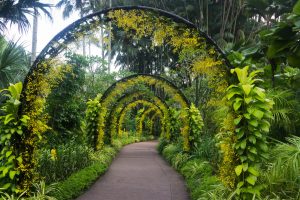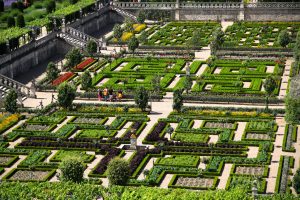Jacey Klose – Gardening as an Art Form
Jacey Klose
The focus of this portfolio is to showcase the power and value of gardening as an art form that brings people closer to nature. Gardening has long been considered an art form and took root as more than just a way to grow produce during the renaissance, with people beginning to view gardens as something for enjoyment rather than utility. In this portfolio, I intend to focus on a variety of gardens from around the world and how they not only allow us to grow closer to nature, but how they benefit the people that visit them as well.
There are two themes I’d like to address in this portfolio. The first theme is how gardening as an art form benefits humanity as a whole. Gardens provide a peaceful and relaxing space and allow people to get away from an urban setting. Not only this, but some gardens also benefit people by providing fresh and healthy produce. The second theme is how gardening as an artform allows people to feel more connected to nature. In a world where over 55% of the population lives in an urban area, there’s a disconnect between humanity and nature. Gardens help to overcome this disconnect by giving people a space to become immersed in nature.
Each image showcases a different form of gardening as well as an example of that type of gardening as an art.

The first image shows an example of a botanical garden. The first botanical gardens were created in Italy during the 16th and 17th centuries for the purpose of academic study. Later, in the 18th and 19th centuries, botanic gardens became much more popular in Europe and in most cases served purely for pleasure. In current times, these gardens also serve to conserve rare and threatened plants as well as to acquaint people with nature.
This image showcases the Singapore Botanic Gardens, which is home to over 10,000 species of plants and is the only tropical botanic garden on the UNESCO’s World Heritage List. With such a large variety of plant species of all shapes and colors, botanical gardens like this one help to immerse people in nature and to remind us of the beauty it holds. Botanical gardens also provide people a relaxing space to explore nature and to get a deeper connection to the world around us.

The second image depicts an example of a community garden. Community gardens allow people of all ages to make their own art through gardening. This type of garden excels in overcoming the disconnect between humanity and nature as it allows the community members to get hands on experience gardening as well as eating what they grow. These gardens also provide a green space in urban areas for people to relax and really connect with nature.
Also in this photo is Ron Finley, the “Gangsta Gardener”. He uses community gardens as his medium for his art. As he says himself “I’m an artist. Gardening is my graffiti. I grow my art. I use the garden soil like it’s a piece of cloth, and the plants and the trees, that’s my embellishment for that cloth. You’d be surprised what the soil can do if you let it be your canvas.” His community garden was a huge success and he’s gone on to create more gardens and to teach others how to create their own art through community gardens. Overall, community gardens excel in benefiting the community it serves through both a green space and fresh produce. They also do a great job connecting people with nature by allowing them to learn how to grow their own produce.

The last photo shows an exemplary example of a vegetable garden. While vegetable gardens aren’t typically considered art, with time, effort and planning it too can be a wonderful work of art. Vegetable gardens grow a large variety of produce and allow people to connect with nature through both a relaxing greenspace and the ability to see and understand how our food is grown.
This is a photo of the vegetable gardens of Chateau de Villandry, a recreation of what the gardens are presumed to have looked like during the renaissance. With plots for different vegetables separated with neat and short hedges this garden is truly a work of art. This work of art is ever changing as with each new season the patches are planted with vegetables in alternating colors, creating a “multicoulored chessboard”. Altogether, vegetable gardens also have great potential to be works of art and have great benefits such as fresh produce and a calm and peaceful environment in which to relax.
Gardening as an artform is important because of how it brings humanity closer to nature as well as because of how it benefits the surrounding area. Gardens as a work of art, such as the ones above, help to immerse people into nature and provide a way to relax and escape the urban environment. Each helps us to gain a new understanding of nature and provides a wonderful greenspace in our increasingly urbanized world. Gardening as an art helps us as a society to better connect with nature and to have a healthy respect for, and understanding, of nature.

